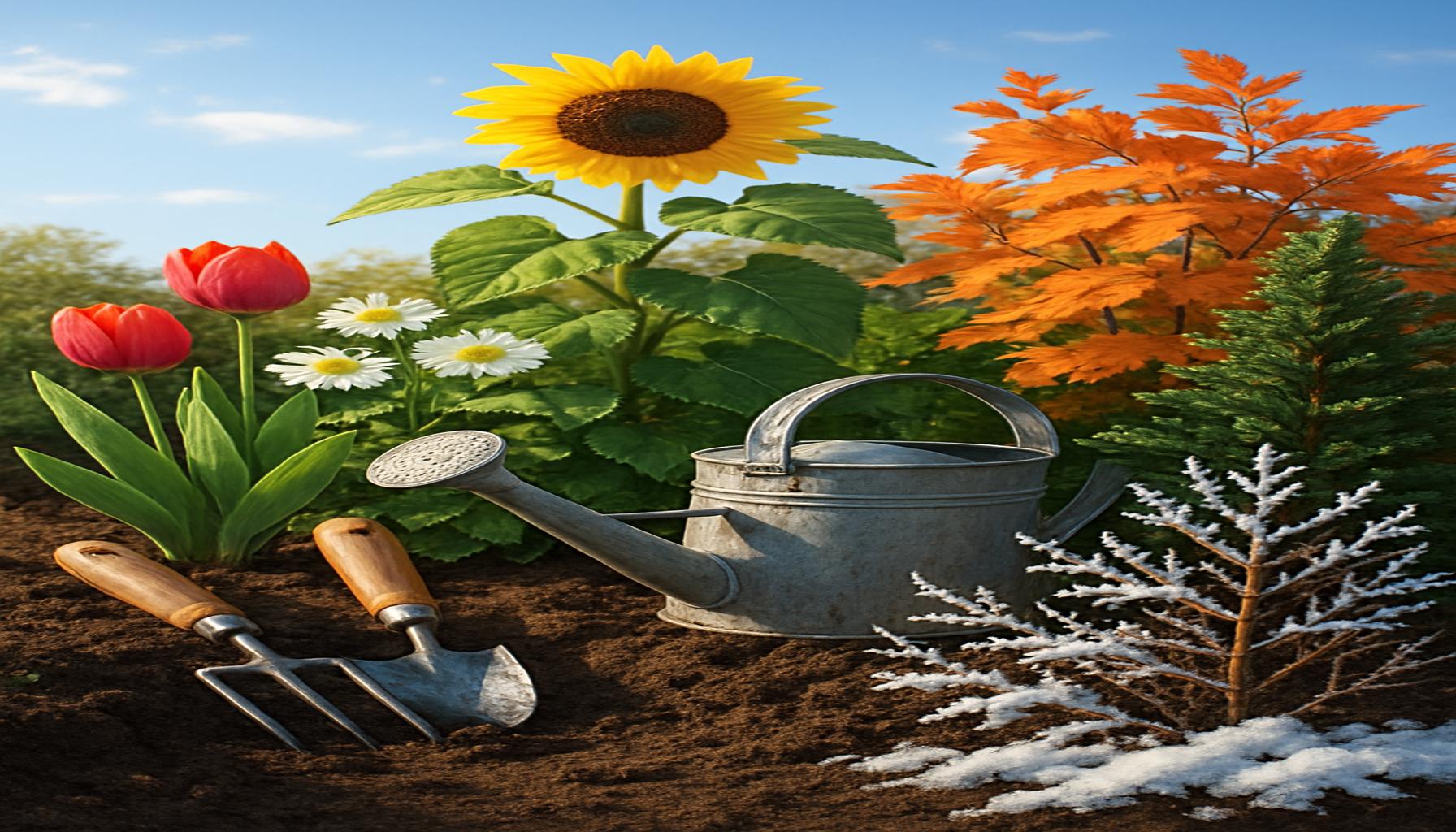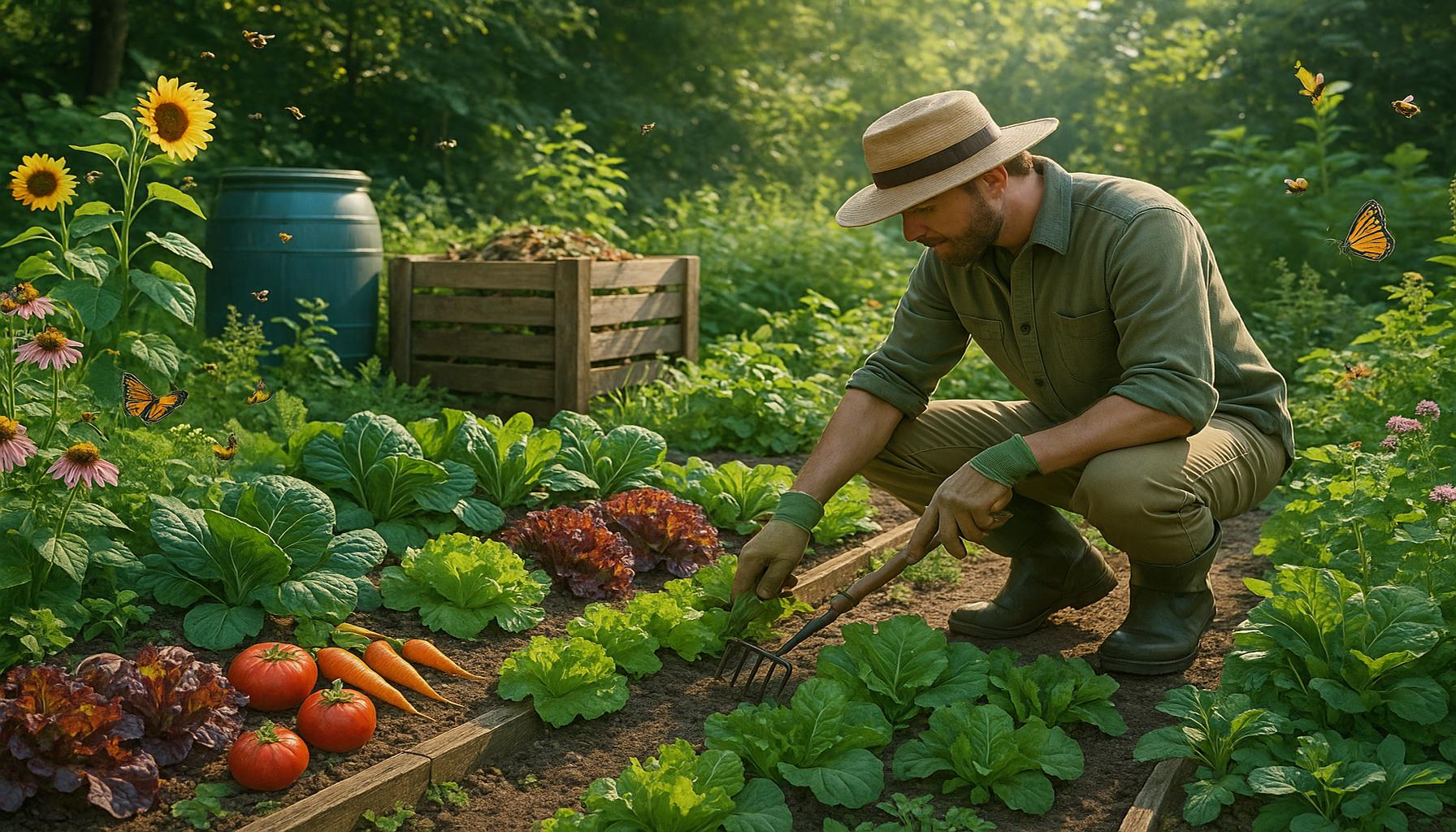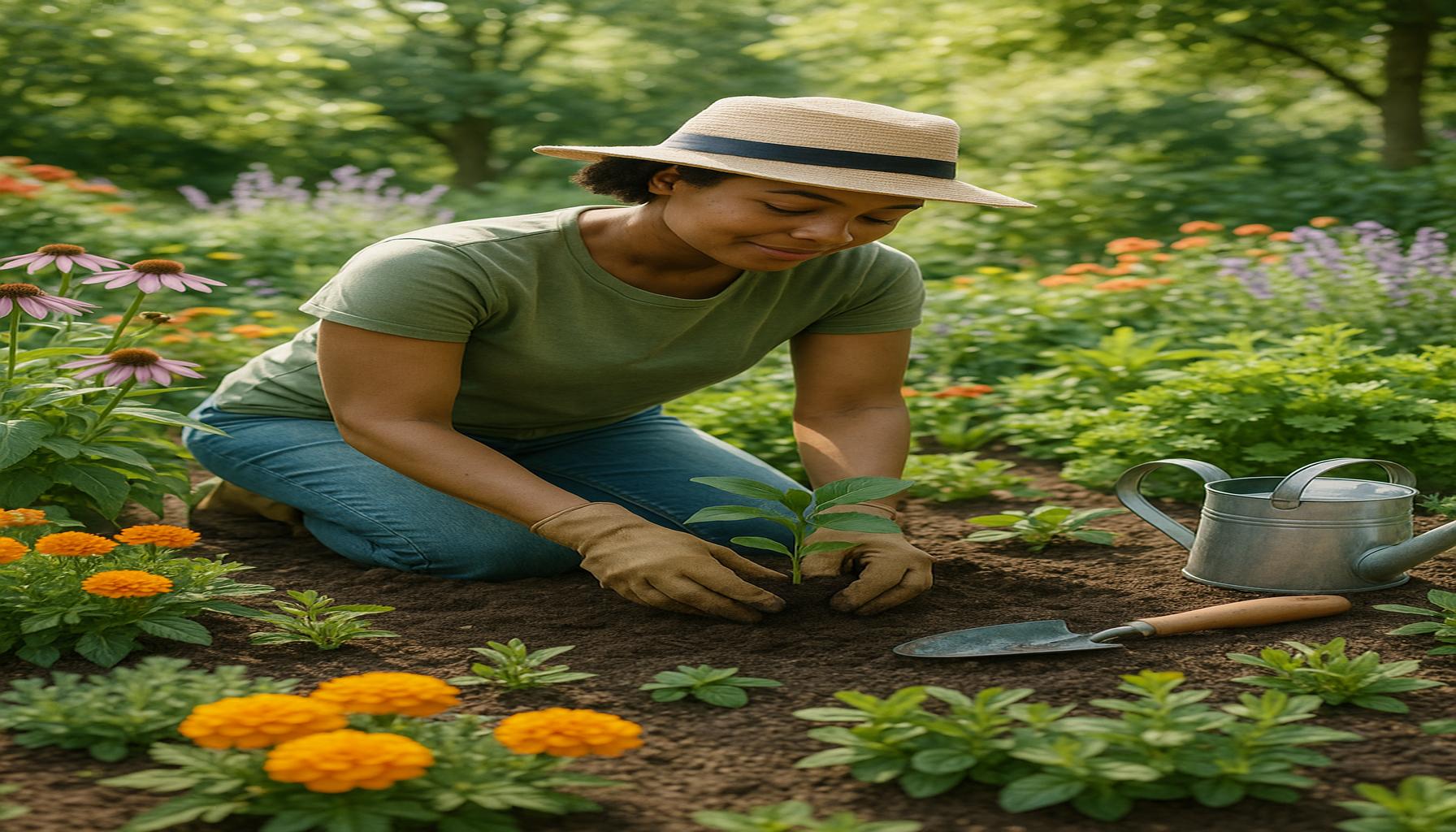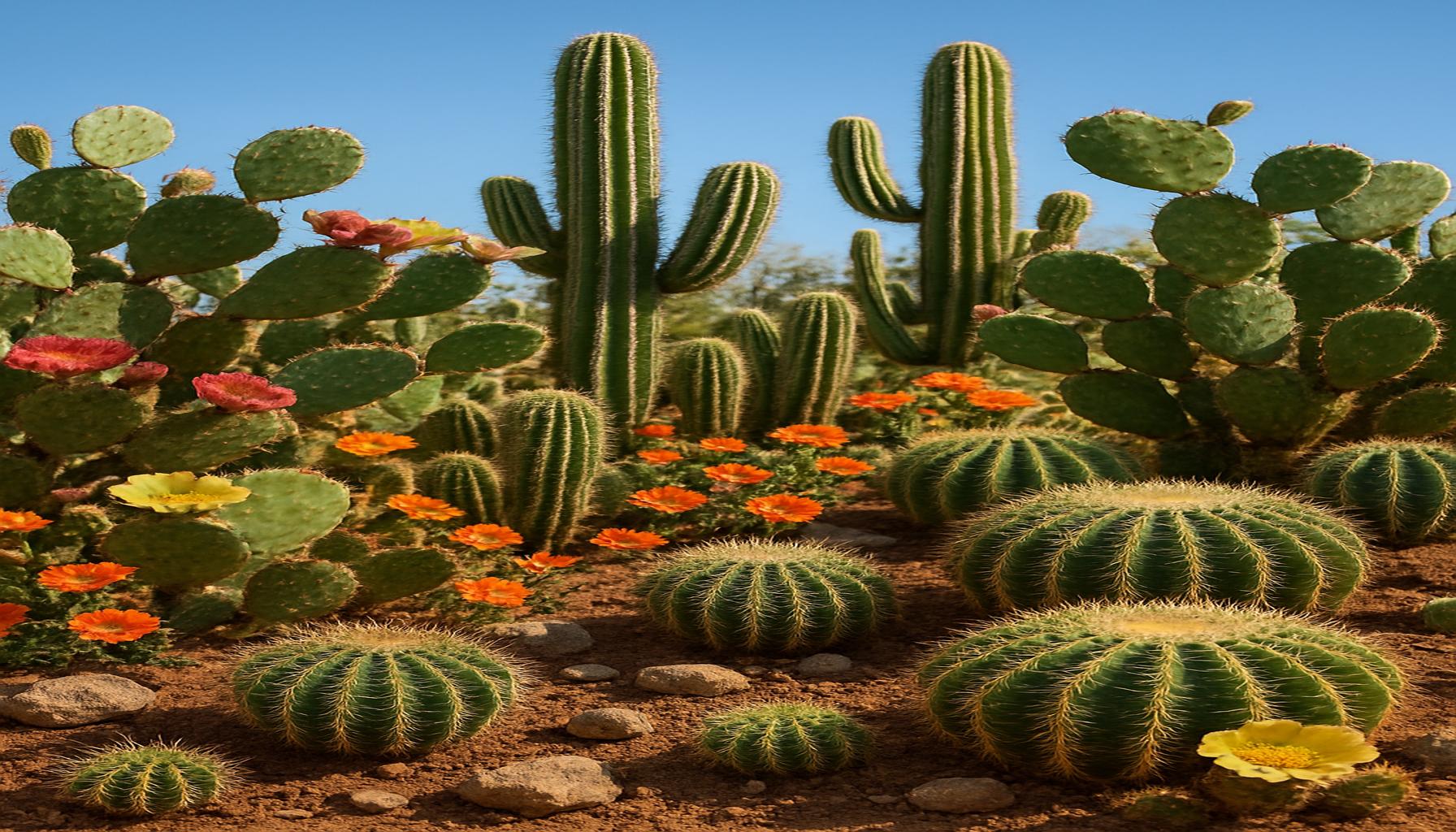Seasonal Gardening: Planning and Cultivating a Garden Throughout the Year

Exploring the Art and Science of Seasonal Gardening
Gardening is an ongoing adventure that unfolds throughout the year, each season bringing its own set of tasks, challenges, and rewards. By understanding how to plan and cultivate a garden tailored to each season, you can ensure your green space remains vibrant, productive, and resilient. The practice of seasonal gardening engages enthusiasts and newcomers alike, inviting them to connect with their environment in a meaningful way.
Engaging in seasonal gardening allows for:
- Year-round engagement: Each season presents a new opportunity to engage with nature. From preparing your soil in winter to planting fresh seeds in spring, there is always something to do.
- Adaptation to climate: Every region boasts unique climate conditions that can influence your gardening strategy. Understanding these nuances is crucial for your garden’s success.
- Diverse plant choices: Each season offers a fresh palette of plants to explore. From vibrant summer blooms to hardy winter perennials, the options are endless.
To maximize your gardening experience, it’s essential to appreciate the distinct characteristics that each season brings. For instance:
- In the South, warm-season crops like tomatoes, peppers, and corn flourish in the heat. Ideal planting times range from late March to early June, ensuring you capitalize on the warmest months.
- The Midwest showcases a rich variety of perennials that burst into bloom in spring. Plants such as echinacea and daylilies are favorites among local gardeners and can create spectacular displays that last throughout the summer.
- The Pacific Northwest, known for its mild climate, offers an ideal environment for leafy greens like kale and spinach, which can be grown nearly year-round, taking advantage of the region’s ample rainfall.
Venturing into seasonal gardening also enhances your environmental awareness. You learn the importance of biodiversity and how to cultivate a balanced ecosystem that supports native wildlife. As you invest time in your garden, you deepen your understanding of plant relationships, soil health, and pest management.
Ultimately, seasonal gardening is about cultivating not just plants, but a profound connection to nature. This journey encourages you to embrace the cyclical rhythms of the earth, reinforcing the significance of patience and anticipation. Each season enriches your knowledge and skills, allowing you to unlock the true potential of your garden. As you embrace this dynamic hobby, prepare to uncover a world of beauty and productivity no matter the time of year.
DISCOVER MORE: Click here to dive into the world of calligraphy
Understanding Seasonal Cycles: The Heart of Gardening
To successfully navigate the intricacies of seasonal gardening, it is imperative to grasp the distinct cycles that define each season. This understanding not only shapes your planting and harvesting schedule but also influences how you care for your plants and prepare your garden. Each season plays a crucial role in the overall gardening framework, dictating what can thrive, when to plant, and what maintenance tasks to prioritize.
Starting in winter, while many may view the garden as dormant, this season is foundational for what lies ahead. It is a time for reflection and preparation. As temperatures drop and the ground freezes, engaging in soil health tests and amendments can set the groundwork for spring. Adding organic matter, such as compost, improves soil structure and nutrient content. Furthermore, winter is a perfect time to plan new beds, research plant varieties suitable for your climate, and reflect on what worked or didn’t in the previous year. Notably, if you live in USDA Zone 7 or warmer, consider planting garlic or shallots in late winter for an early harvest.
As spring arrives, heralding warmth and new growth, it transforms the gardening landscape into a canvas for fresh possibilities. This season demands enthusiasm and action, as it is the prime time for sowing seeds and transplanting young plants. The key crops to consider when planning your spring garden include:
- Leafy greens such as lettuce, spinach, and arugula, which thrive in cooler conditions.
- Brassicas like broccoli and cauliflower, responsive to mild days and cool nights.
- Root vegetables such as carrots and radishes, which can be sown early in the season.
While planting, pay attention to frost dates, which can vary across regions in the United States. In northern states, such as Minnesota, the risk of frost persists longer into the spring, whereas warmer states like Florida may allow for planting as early as January. Using tools like a frost date calculator or local gardening guides can significantly aid your planning efforts.
As the summer sun intensifies, your garden transforms into a thriving ecosystem. This is the time to embrace your garden’s potential. Warm-season crops such as tomatoes, peppers, and squash are at their peak, requiring attentive care, including regular watering, mulching for moisture retention, and proactive pest management. Furthermore, summer gardening often includes the joy of harvesting; indulging in the fruits of your labor while celebrating the abundance can be a deeply rewarding experience.
Understanding these seasonal transitions enhances both your knowledge and skills, paving the way for a vibrant, flourishing garden year-round. By aligning your gardening practices with nature’s cycles, you not only foster a thriving garden but also cultivate a deeper, more harmonious relationship with the environment.
| Advantage | Description |
|---|---|
| Diverse Plant Choices | Engaging in seasonal gardening allows you to explore a wide variety of plants tailored to each season, enhancing garden aesthetics and biodiversity. |
| Sustainability | Cultivating your garden according to seasonal changes promotes sustainable gardening practices, reducing reliance on chemical treatments and fostering ecological balance. |
Exploring the world of seasonal gardening illuminates the benefits of adapting your gardening practices to the changing climate throughout the year. By carefully planning your garden, you not only celebrate the unique qualities of each season but also ensure year-round productivity with strategically chosen crops. In spring, the explosion of vibrant blooms and seedlings offers a refreshing start, while summer provides a bounty of vegetables to harvest. As the weather cools in autumn, it’s a perfect time to plant hardy crops and prepare garden beds for winter.Moreover, seasonal gardening can be a rewarding hobby that connects you more closely with nature. As you learn to work in harmony with the natural rhythms of the environment, your gardening skills flourish, leading to a more fruitful yield. An investment in knowledge about your local climate and its seasonal variations can greatly enhance your gardening success, bringing both beauty and nourishment to your home. Investigating further into plants that thrive in your area can unveil opportunities you didn’t know existed, transforming your garden into a year-round oasis.
DIVE DEEPER: Click here to discover the art of vertical gardening
Navigating the Autumn Harvest and Preparing for Winter
As summer gives way to autumn, the lush green of the garden begins a gradual transition into a vivid tapestry of oranges, yellows, and reds. This season stands out as one of the most rewarding times for gardeners, offering the chance to reap the rewards of hard work and dedication. Autumn is not just about harvesting, however; it also serves as a critical period for preparation and strategic planning for the upcoming winter months.
During fall, crops such as pumpkins, apples, and squash are at their prime. Harvesting these late-season gems is a celebration of the year’s labor, encouraging gardeners to explore various preservation methods such as canning, freezing, or drying to make the most of the bounty. Beyond harvesting, autumn calls for diligent garden maintenance. It is essential to remove any spent or diseased plants to prevent potential issues in the following year and to ensure soil health. This is also the perfect time to plant cover crops, such as clover or rye, which improve soil structure and prevent erosion during the winter months.
Moreover, autumn provides a unique opportunity to prune perennials and woody plants. This practice not only helps shape the plants for optimal growth but also aids in removing any dead or diseased wood to promote healthier blooms come spring. Moreover, gardeners in northern regions should be mindful of hardiness zones, as this will dictate the proper timing of planting bulbs for spring flowers like tulips or daffodils. These bulbs need the colder winter months to establish their root systems, ensuring a vibrant display when the snow melts.
Winter Wonders: Embracing the Cold Season
Transitioning into winter, many might assume that gardening is put on hold, but this season presents unique challenges and opportunities. In regions with harsher winters, protecting your garden is paramount. Utilizing row covers, cloches, or cold frames can create a microclimate that allows for the cultivation of hardy greens like kale and Swiss chard. Additionally, crops such as Brussels sprouts benefit from the cold, often developing a sweeter flavor as frost sets in.
For the winter gardener, the beauty of the season can also be embraced through landscape aesthetics. Incorporating winter interest plants, such as evergreens or holly, not only provides visual appeal but also supports local wildlife. Bird feeders can be an excellent addition, attracting flocks during the colder months and lending a vibrant atmosphere to the otherwise quiet garden.
As winter progresses, it becomes an ideal time for education and planning—attending gardening workshops, reading books, or joining local gardening clubs can provide a wealth of knowledge to enhance your gardening skills. Many gardeners also benefit from utilizing this time to design next year’s garden layout, experimenting with companion planting strategies, or researching new vegetable varieties and their compatibility with local climates. This forward-thinking approach keeps the passion for gardening alive and nurtures a sense of anticipation for the coming seasons.
By taking advantage of the distinct characteristics and challenges presented in each season, gardeners can maintain a continuous cycle of growth, productivity, and enrichment throughout the entire year. Embracing seasonal gardening means engaging with nature’s rhythms and nurturing a garden that not only flourishes but also enhances the surrounding environment.
DISCOVER MORE: Click here to learn about the evolution of digital art
Conclusion: Continuous Cultivation and Connection with Nature
As we traverse through the various stages of the gardening calendar, it becomes evident that seasonal gardening is not merely an act of planting and harvesting but an intricate dance with nature itself. By understanding and embracing the unique characteristics of each season, gardeners can cultivate a thriving green space that rewards them year-round. From the vibrant array of autumn produce to the serene landscapes of winter, every season offers distinct opportunities and challenges that, when approached with intention, can lead to a rewarding gardening experience.
Through diligent planning and thoughtful cultivation, gardeners should take the time to reflect on their previous year’s experiences, adapting strategies and learning from their successes and setbacks. It is essential to recognize that gardening is as much about nurturing our environment and fostering a deep connection with nature as it is about growing food. Embracing sustainable practices, such as utilizing cover crops, engaging in organic methods, and promoting biodiversity, can significantly impact the health of our soil and local ecosystems.
Moreover, the joy of seasonal gardening lies in the opportunity for continual learning and exploration. Whether it’s experimenting with new plant varieties, incorporating seasonal décor that enhances winter landscapes, or participating in community gardening groups, there is always something new to discover. As we look forward to the upcoming seasons, let us cherish the beauty of gardening as a holistic endeavor that nourishes our bodies, minds, and spirits. By seamlessly integrating the practices of planning and cultivating a garden throughout the year, we not only enrich our own lives but contribute positively to the world around us.


